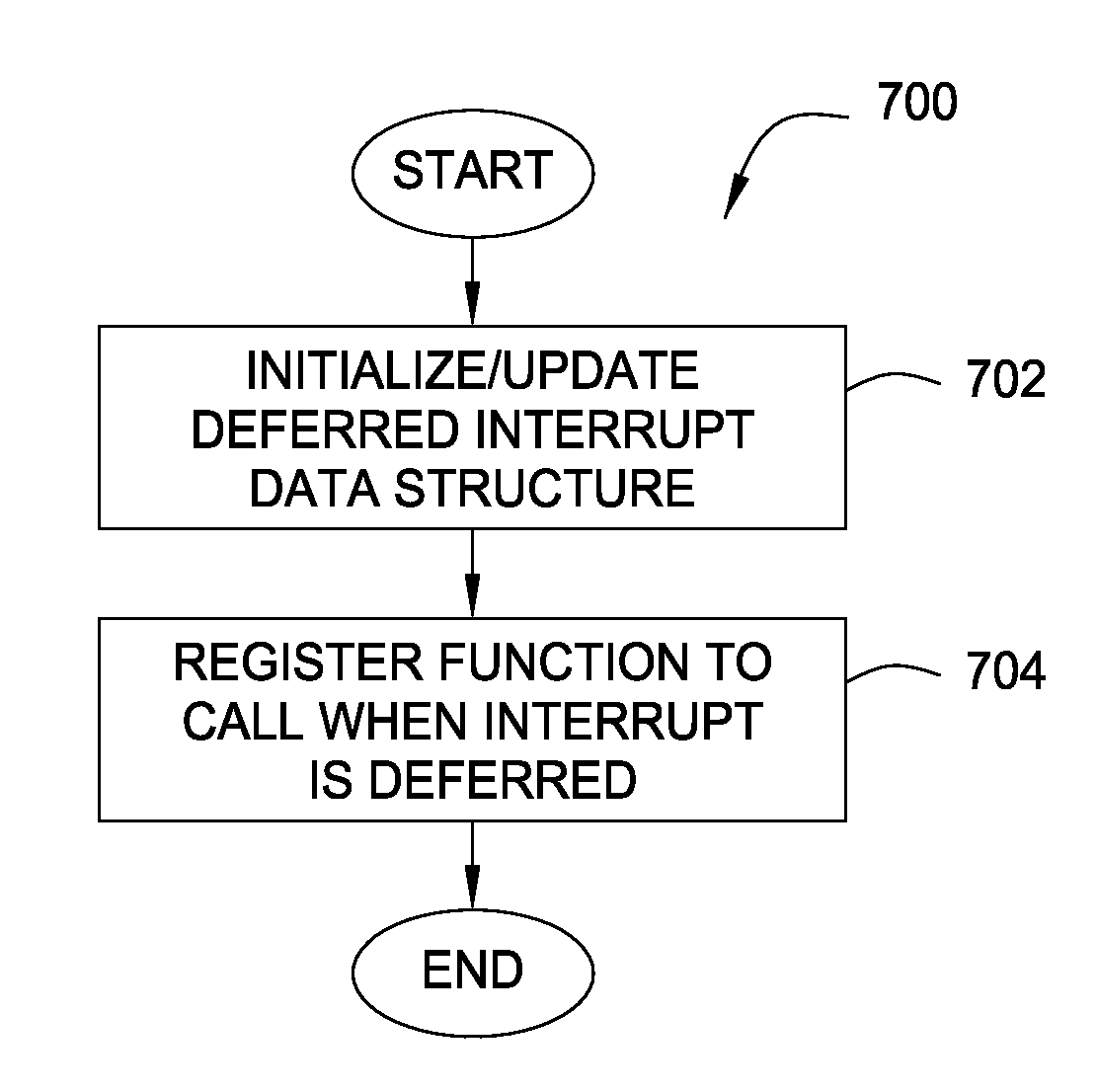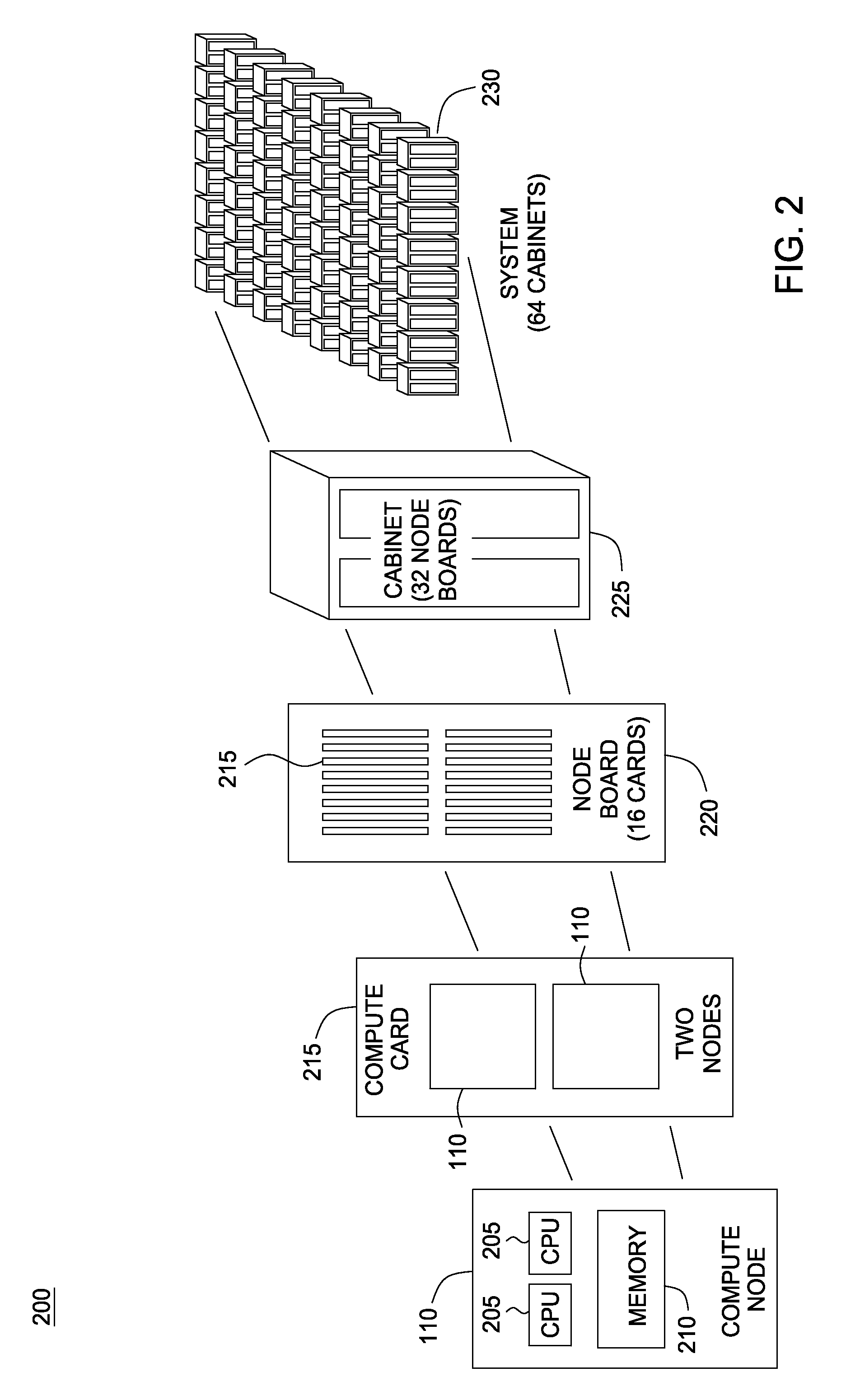Efficient deferred interrupt handling in a parallel computing environment
a parallel computing and deferred processing technology, applied in the field of parallel computing, can solve the problems of preventing the operation of common operations or functions, unused locking mechanisms provided by the c library, and the lightweight kernel on the compute node does not include the locking structures available from a full thread package, so as to achieve efficient deferred interrupt handling and fast interrupt disabling and processing.
- Summary
- Abstract
- Description
- Claims
- Application Information
AI Technical Summary
Benefits of technology
Problems solved by technology
Method used
Image
Examples
Embodiment Construction
[0027]Embodiments of the present invention provide techniques for protecting critical sections of code being executed in a lightweight kernel environment. These techniques operate very quickly and avoid the overhead associated with a full kernel mode implementation of a network layer, while also allowing network interrupts to be processed without corrupting shared memory state. Thus, embodiments of the invention are suited for use in large, parallel computing systems, such as the Blue Gene® system developed by IBM®.
[0028]In one embodiment, a system call may be used to disable interrupts upon entry to a routine configured to process an event associated with the interrupt. For example, a user application may poll network hardware using an advance( ) routine, without waiting for an interrupt to be delivered. When the advance( ) routine is executed, the system call may be used to disable the delivery of interrupts entirely. If the user application calls the advance( ) routine, then deli...
PUM
 Login to View More
Login to View More Abstract
Description
Claims
Application Information
 Login to View More
Login to View More - R&D
- Intellectual Property
- Life Sciences
- Materials
- Tech Scout
- Unparalleled Data Quality
- Higher Quality Content
- 60% Fewer Hallucinations
Browse by: Latest US Patents, China's latest patents, Technical Efficacy Thesaurus, Application Domain, Technology Topic, Popular Technical Reports.
© 2025 PatSnap. All rights reserved.Legal|Privacy policy|Modern Slavery Act Transparency Statement|Sitemap|About US| Contact US: help@patsnap.com



